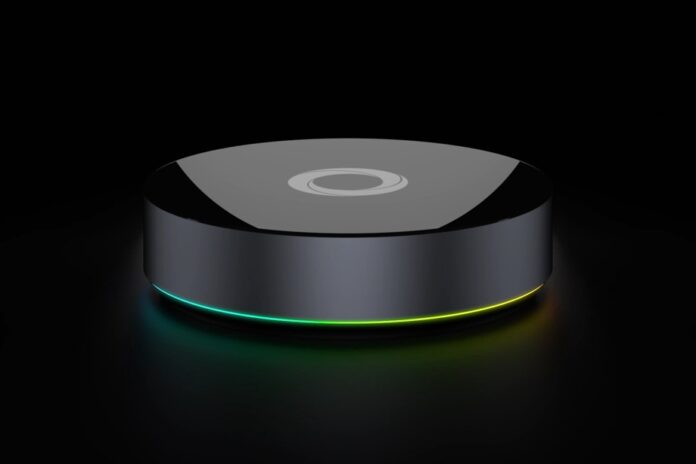The Homey Bridge concentrator is a dream. Controlling all your home automation devices from different manufacturers on a single interface, replacing all your hubs with one for less than $100 is a tempting offer. But in our case, it was of little use.
Unless you can find everything from a single manufacturer, most home automation enthusiasts must learn to deal with several applications, or even install several hubs on their router. This is our case, with around 40 light bulbs, sockets, switches, thermostats, speakers, doorbells and other smart devices, 3 hubs and 16 different manufacturers.
Hard, the life of techno critic and incorrigible amateur of connected gadgets.
So here comes the Homey Bridge, “the last smart home hub you’ll ever need”, promises the manufacturer, Athom B.V., headquartered in the Netherlands. Compatible “with a thousand manufacturers”, this hub uses almost every wireless protocol that abounds in a home, from WiFi to Zigbee to Bluetooth, infrared, Z-Wave and even the sometimes used 433 MHz by older devices.
Everything starts very well with the installation of this big hard plastic washer, which we do not need to plug in near the router since it relies on wireless. We download the Homey application from the App Store or Google Play Store, create an account and our Homey Bridge is immediately detected.
Small coquetry, the puck has at its base a rotating ring of multicolored light, which can be deactivated in the parameters.
It is in the second tab of the Homey application that we can add our home automation devices, from a search menu. One types in the “brand name” and, if compatible, one is prompted to enter login information with that manufacturer.
Let’s be positive and present what worked in this first part. A LIFX bulb, a TP-Link switch and a Roomba vacuum were able to be fully supported by the Homey Bridge, with all their usual functions offered. Our Sonos devices have also been added, with minimal controls for volume, stopping, or forwarding or rewinding songs.
The other interesting function is in the “Flow” tab. In summary, home automation devices can be associated with hundreds of triggers. For example, the sunrise or your presence turns on a light bulb, plays music or opens a blind. The possibilities are virtually limitless and the ones we tried worked well.
Last function, you can get the power consumption of devices turned on and monitored by the Homey Bridge.
To connect more than five devices, a subscription to Homey Premium is required, which costs $3.99 per month, which is very reasonable. Three months free with purchase.
For four compatible manufacturers, we ran into brands that weren’t compatible exactly nine times. That’s bad news: three of them, Sinopé, Cync and Insteon, are our favorites and account for two-thirds of our home automation devices.
Three other brands, WiZ, Nest and LG, were added but provided absolutely no control. Seeing a Nest Cam appear with the message “No commands available” is useless.
The minimal control of Sonos speakers is good, but we are very far from what the Sonos application allows.
We cannot exclude that some home automation enthusiasts come across brands that are 100% compatible with the Homey Bridge. Philips Hue, Sonos, and Fibaro, among others, are specifically mentioned on the Homey site.
But in our experience, this purchase is simply not worth it. Devices from our four compatible manufacturers don’t even need a hub. All of our devices, without exception, are recognized by the Google Assistant and Alexa and can be controlled by voice or from mobile apps. Here we have two examples of platforms that are much more universal than the Homey Bridge.
Manufacturer: Athom B.V.
Price: $99
Rating: 4 out of 10















